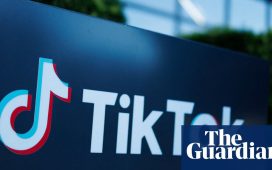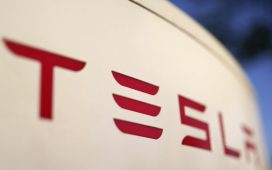You might have noticed that we are living through a time of total tokenisation. Digital art, tweets, music, sports memorabilia and even “crypto-flowers” are being minted into so-called non-fungible tokens (NFTs) that are saved on to a blockchain (usually the Ethereum blockchain) and then sold for huge sums of money. Like, yuge. On Thursday, a new record was set for a sale of a digital asset: $69.3m for a digital collage by the contemporary artist Beeple.
In case you were wondering but were too afraid to ask, the reason these digital “collectibles” are labelled “non-fungible” is to keep them distinct from the more common form of crypto tokens, like bitcoin or Ether, which were designed to be used as currencies (though they are used far more for speculation). Because these tokens were designed as currencies, they are meant to be fungible, meaning that their individual units are mutually interchangeable: the idea is that one bitcoin is always worth the same as any other bitcoin, in other words.
In reality, that is in fact not really the case, because the blockchain allows you to trace the transaction history of any given coin, meaning that coins that have been found to have been involved in illicit transactions are “dirty”, and that any coin that has been spent at all is less desirable than freshly mined “virgin” coins, which are sometimes sold for a premium. But that is the reason for the name; NFTs are designed to be unique digital assets, so one NFT ≠ another NFT.
But in a world of infinite possibility like cryptoland, the rise of the non-fungibles doesn’t of course negate the value of the fungibles. You can also tokenise something from the real world (not just the silly ephemeral digital one) and turn it into something fungible that you can also stick on the blockchain, by creating a “coin” from it rather than an NFT. One example of this is the plethora of gold-backed cryptocurrencies that exist; another is stablecoins supposedly backed by real money such as dollars. (Ahem.)
So real-world assets can be tokenised too. And what could be real-er than, well, YOU? We hadn’t really considered this idea until we received this via direct message on Twitter:
Now, “crypto influencers” we may or may not be, but crypto-writing journalists we certainly are, and so we didn’t take this person up on their offer as we felt like it might be kind of off to try to profit from a “space” that we write about. (Not that this principle is paid attention to by all “journalists”, for instance those covering certain electric car manufacturers, but we digress.) However we did have a look at this platform to see how it would work so we could give you the lowdown . . .
It’s called MintMe.com, and it turns out that it’s in fact not just crypto influencers who can make their own coins so as to “fund (themselves) for free”. Anyone in fact, the website says, can turn themselves into a coin:
Anyone can mint or create a token (coin) that represents themselves or a project that they have created for their fan base and supporters to support them.
It helps content creators to realise their maximum potential through a new innovative way of crowdfunding. It’s also a social platform where traders
can interact with token creators and other traders. Tokens are created (minted) on top of our custom decentralised blockchain called MintMe Coin.When you create coin or create token [sic], you become an owner of your own financial future. Create a token, create a coin for your project or yourself or just trade other people coins.
Who doesn’t want to become an owner of their own financial future!? Who doesn’t want to be represented in digital form by “people coins”? The site also has a useful FAQs section, featuring questions and answers such as:
I’ve created a token. How can I give it a real value?
Coins are as valuable as you make them, you give them the value because they are a tokenised representation of yourself or your project.
As we said above, you see, cryptoland is a world of infinite possibility. Yes, you already exist in the real world and have a real-world value, but the important thing to remember is that crypto is not a zero-sum game. Your real-world value doesn’t take away from your tokenised value. You are a scarce asset, and yet you are infinite. Simples! Moving on with the FAQs:
Why would I accept token instead of USD for my work?
To get money when you need it. You might need tools to start earning, but you have no money to buy them, so how to start? By allowing potential customers to judge your offer and decide if you are worth their trust. If your offer will be credible, they could purchase tokens that will be worth your service, this way you first get tools needed for your work and customers get the service they needed.
Honestly, we have tried to understand this as an answer to that question, but we really can’t. It is a nonsense.
Moving on to our personal favourite:
Why would anyone believe in me or my coin?
Because you have developed a reputation for yourself that certainly has value. You are a valuable asset that can be tokenised as such on the MintMe platform. Your supporters might also feel more comfortable in being able to benefit later from supporting you now.
You are a valuable asset that can be tokenised as such. Don’t you ever let anyone ever tell you otherwise! And when we say you, we mean each and every one of you – all 7.8bn-odd of you out there. You are many but you are scarce! Scarcity is value. Value is harnessed on the blockchain. The blockchain’s possibilities are infinite. Infinite scarcity for the win!
Related links:
This Valentine’s, consider the crypto-flower – FT Alphaville
This is nuts. This is a $69m JPG. – FT Alphaville
The future is non-fungible – FT









